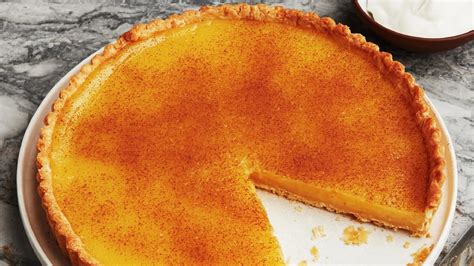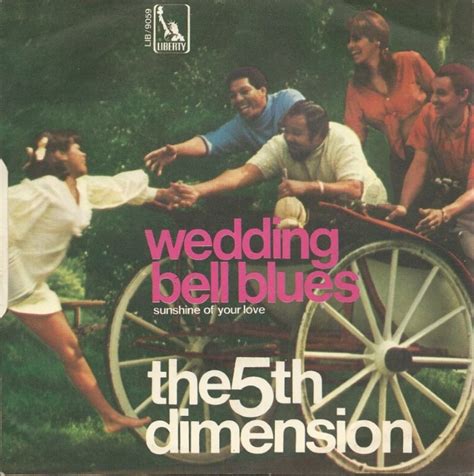
Iowa’s vinegar pie, a Depression-era dessert born of necessity, is experiencing a resurgence in popularity, despite its polarizing tart flavor profile. This old-fashioned pie offers a taste of culinary history, but its distinctive tang is undeniably an acquired taste.
Vinegar pie, a staple in frugal kitchens of the past, is making a comeback as home cooks and bakers rediscover its unique appeal. Faced with ingredient shortages, resourceful cooks turned to vinegar as a substitute for citrus, creating a sweet and tangy filling that defies expectations. While lemon meringue pie is a classic, vinegar pie presents a similar acidic brightness, achieving a delicate balance of sweet and sour notes. However, opinions on the dessert are divided, with some praising its nostalgic charm and others finding its signature tang off-putting.
“It’s an old-school pie that might not be for everyone,” acknowledges food historians. “But for those who appreciate its historical significance and unique flavor, it’s a true culinary gem.” The pie’s history is rooted in practicality, arising from periods where ingredients like lemons were scarce or expensive. Vinegar, readily available in most households, stepped in to provide the necessary acidity for a flavorful filling.
The preparation of vinegar pie is relatively straightforward, contributing to its revival in modern kitchens. The filling typically includes vinegar (often apple cider vinegar), sugar, eggs, butter, and a blend of spices, creating a custard-like consistency when baked. The type of vinegar used significantly impacts the flavor profile, with apple cider vinegar imparting a slightly fruity undertone, while white vinegar delivers a sharper tang. Variations of the recipe exist, with some incorporating ingredients like cornstarch or flour to thicken the filling and achieve a smoother texture. Others might add vanilla extract or nutmeg to enhance the overall flavor complexity.
The pie’s revival is fueled in part by a growing interest in historical recipes and a desire to connect with culinary traditions of the past. Food bloggers and home bakers share their versions of vinegar pie, introducing it to a new generation of food enthusiasts. Social media platforms showcase beautifully photographed slices, sparking curiosity and encouraging experimentation. This renewed interest also aligns with a broader movement toward reducing food waste and utilizing readily available ingredients, echoing the resourcefulness of the pie’s creators.
However, the pie’s acquired taste remains a barrier for some. The distinct tang of vinegar, while intended to mimic the flavor of citrus, can be overwhelming if not properly balanced. The key to a successful vinegar pie lies in finding the right ratio of sweet to sour, ensuring that the flavors complement each other rather than clash. Many modern adaptations aim to soften the vinegar’s edge, incorporating techniques like browning the butter or adding a touch of molasses for a richer, more nuanced flavor.
For those brave enough to venture beyond conventional desserts, vinegar pie offers a glimpse into culinary history and a surprisingly satisfying treat. Its revival reflects a renewed appreciation for simple, resourceful cooking and a willingness to embrace unconventional flavors. Whether you love it or hate it, vinegar pie is a testament to the ingenuity of past generations and a reminder that sometimes, the most unexpected ingredients can create the most memorable dishes.
The debate over vinegar pie underscores the subjective nature of taste and the enduring power of culinary traditions. It’s a reminder that food is more than just sustenance; it’s a reflection of history, culture, and personal experience. As vinegar pie continues to find its place in the modern culinary landscape, it invites us to appreciate the ingenuity of our ancestors and to embrace the unexpected flavors that enrich our lives. It’s a pie that prompts conversation, challenges palates, and offers a unique perspective on the history of American cuisine. The act of recreating and sharing vinegar pie becomes a way of honoring the past and connecting with the culinary heritage of those who came before us.
Vinegar pie stands as a symbol of resilience and adaptability in the face of scarcity. It represents the ingenuity of home cooks who refused to let limited resources stifle their creativity. By embracing the pie’s unique flavor profile, we not only honor the past but also challenge our own culinary boundaries and expand our appreciation for the diverse range of flavors that exist beyond the mainstream.
The pie’s enduring appeal is a testament to its ability to transcend generations and cultural shifts. While its flavor may not be universally loved, its story resonates with anyone who has experienced hardship or appreciated the value of resourcefulness. In a world where convenience and abundance often overshadow traditional skills, vinegar pie serves as a reminder of the importance of simplicity, creativity, and the enduring power of culinary heritage. Its revival is not merely a fleeting trend but a reflection of our collective desire to connect with the past and embrace the unique flavors that define our culinary identity. The pie stands as an emblem of American ingenuity, representing a time when resourcefulness was not just a virtue but a necessity. Its re-emergence reflects a broader cultural shift toward valuing sustainability, reducing waste, and embracing the traditions of our ancestors. The act of baking and sharing vinegar pie becomes a way of honoring the past and connecting with the culinary heritage of those who came before us, a reminder that even the simplest ingredients can create something truly special.
The modern resurgence of vinegar pie also reflects a growing interest in exploring the full spectrum of flavors, beyond the typical sweetness that dominates much of contemporary dessert culture. The pie’s tangy and slightly acidic profile offers a refreshing contrast, appealing to those who seek a more complex and nuanced culinary experience. Its unique flavor profile challenges our preconceptions about what a pie should taste like, encouraging us to embrace unexpected combinations and expand our palates. Vinegar pie also speaks to the growing awareness of the environmental impact of our food choices. By utilizing readily available ingredients and minimizing waste, the pie embodies the principles of sustainable cooking and encourages a more mindful approach to food consumption. Its revival is not just about rediscovering a forgotten recipe but also about embracing a more responsible and environmentally conscious way of life.
Furthermore, the story of vinegar pie highlights the importance of preserving culinary traditions and passing them down to future generations. By recreating and sharing these recipes, we ensure that the stories and skills of our ancestors are not forgotten. The pie serves as a tangible link to the past, allowing us to connect with the experiences and values of those who came before us. Its revival is a reminder that culinary heritage is not just about food; it’s about culture, community, and the enduring power of human ingenuity. Its unique flavor profile and historical significance make it a valuable addition to the modern culinary landscape, offering a taste of the past while inspiring innovation and creativity in the present.
The continued interest in vinegar pie is also fueled by a desire to connect with a simpler time, when food was more closely tied to the land and the seasons. In a world of mass-produced and highly processed foods, the pie offers a sense of authenticity and connection to our roots. It’s a reminder that the most satisfying meals are often those made with simple ingredients and a lot of love. Its revival is not just about rediscovering a forgotten recipe; it’s about reclaiming a sense of connection to the past and embracing a more mindful approach to food. Its unique flavor profile and historical significance make it a valuable addition to the modern culinary landscape, offering a taste of the past while inspiring innovation and creativity in the present.
Frequently Asked Questions (FAQ) About Vinegar Pie:
Q1: What exactly is vinegar pie and where does it come from?
Vinegar pie is a traditional American dessert that originated during times of scarcity, particularly during the Depression era. “Faced with ingredient shortages, resourceful cooks turned to vinegar as a substitute for citrus, creating a sweet and tangy filling that defies expectations.” It’s essentially a custard pie where vinegar takes the place of lemon or other citrus juices to provide a tart flavor. The pie’s history is rooted in practicality, arising from periods where ingredients like lemons were scarce or expensive. Vinegar, readily available in most households, stepped in to provide the necessary acidity for a flavorful filling. The use of vinegar was a resourceful solution to create a dessert with a similar acidic brightness to lemon meringue pie when citrus fruits were unavailable or unaffordable.
Q2: What does vinegar pie taste like? Is it overwhelmingly sour?
Vinegar pie has a distinctly tangy and slightly sweet flavor profile. The tanginess comes from the vinegar, but the sweetness from the sugar balances it out. The flavor profile is designed to mimic lemon or citrus flavor, creating a sweet-sour taste sensation. Many modern adaptations aim to soften the vinegar’s edge, incorporating techniques like browning the butter or adding a touch of molasses for a richer, more nuanced flavor. The key to a successful vinegar pie lies in finding the right ratio of sweet to sour, ensuring that the flavors complement each other rather than clash. Some people find it to be an acquired taste, but those who enjoy it appreciate the unique combination of sweet and sour. “It’s an old-school pie that might not be for everyone,” acknowledges food historians.
Q3: What kind of vinegar is typically used in vinegar pie? Can I use any kind?
The most common types of vinegar used in vinegar pie are apple cider vinegar and white vinegar. Apple cider vinegar imparts a slightly fruity undertone, while white vinegar delivers a sharper tang. The choice of vinegar can significantly impact the flavor profile. While other vinegars could technically be used, apple cider vinegar and white vinegar are the most traditional and recommended for achieving the desired flavor. Experimenting with other vinegars may alter the flavor substantially and might not yield the best results. Some cooks use malt vinegar for its distinct flavor.
Q4: Is vinegar pie difficult to make? What are the main ingredients?
Vinegar pie is relatively simple to make, which is one of the reasons for its resurgence. The main ingredients typically include: vinegar (often apple cider vinegar), sugar, eggs, butter, and a blend of spices. The pie crust can be homemade or store-bought. Variations of the recipe exist, with some incorporating ingredients like cornstarch or flour to thicken the filling and achieve a smoother texture. Others might add vanilla extract or nutmeg to enhance the overall flavor complexity. The straightforward preparation contributes to its revival in modern kitchens.
Q5: Why is vinegar pie making a comeback now?
There are several reasons for vinegar pie’s resurgence. One is the growing interest in historical recipes and a desire to connect with culinary traditions of the past. Food bloggers and home bakers share their versions of vinegar pie, introducing it to a new generation of food enthusiasts. This renewed interest also aligns with a broader movement toward reducing food waste and utilizing readily available ingredients, echoing the resourcefulness of the pie’s creators. Additionally, its unique flavor profile offers a refreshing departure from typical overly sweet desserts, appealing to those seeking more complex flavors. The pie stands as a symbol of resilience and adaptability in the face of scarcity. It represents the ingenuity of home cooks who refused to let limited resources stifle their creativity.
The recipe for vinegar pie generally contains the following ingredients and steps:
Ingredients:
- 1 single-crust pie crust (homemade or store-bought)
- 1 1/2 cups water
- 1 1/2 cups sugar
- 1/4 cup apple cider vinegar (or white vinegar for a sharper flavor)
- 1/4 cup butter, melted
- 3 tablespoons all-purpose flour or cornstarch (for thickening)
- 3 large egg yolks, lightly beaten
- 1 teaspoon vanilla extract (optional)
- 1/4 teaspoon ground nutmeg (optional)
- Pinch of salt
Instructions:
- Prepare the Pie Crust: If using a homemade pie crust, roll it out and fit it into a 9-inch pie plate. Crimp the edges decoratively. If using a store-bought crust, simply unroll it into the pie plate. Pre-bake the crust for 10-12 minutes at 350°F (175°C) to prevent it from becoming soggy. Let it cool slightly.
- Combine Wet Ingredients: In a medium saucepan, whisk together the water, sugar, vinegar, melted butter, flour (or cornstarch), egg yolks, vanilla extract (if using), nutmeg (if using), and salt. Make sure there are no lumps.
- Cook the Filling: Place the saucepan over medium heat and cook, stirring constantly, until the mixture comes to a simmer and thickens. This should take about 5-7 minutes. Continue to cook for another minute or two, stirring constantly, to ensure the flour (or cornstarch) is fully cooked and the filling is smooth.
- Pour into Crust: Pour the hot filling into the pre-baked pie crust.
- Bake: Bake in a preheated oven at 350°F (175°C) for 25-30 minutes, or until the filling is set and the crust is golden brown. The filling should be slightly jiggly in the center, but it will firm up as it cools.
- Cool Completely: Remove the pie from the oven and let it cool completely on a wire rack. This will take at least 2-3 hours. Cooling the pie thoroughly is important for the filling to set properly.
- Chill (Optional): For an extra-firm filling, you can chill the pie in the refrigerator for an additional hour or two before serving.
- Serve: Slice and serve the vinegar pie. It can be enjoyed plain or with a dollop of whipped cream or a sprinkle of nutmeg.
Tips for a Perfect Vinegar Pie:
- Use Quality Ingredients: The flavor of the vinegar will be prominent, so choose a good quality apple cider vinegar or white vinegar. Real butter is also essential for a rich flavor.
- Pre-Bake the Crust: Pre-baking the pie crust helps to prevent it from becoming soggy during baking. You can also use pie weights or dried beans to keep the crust from puffing up.
- Stir Constantly: When cooking the filling, stir constantly to prevent lumps from forming and to ensure the mixture thickens evenly.
- Don’t Overbake: Overbaking can cause the filling to crack or become dry. The filling should be slightly jiggly in the center when it’s done.
- Let it Cool Completely: Cooling the pie completely is crucial for the filling to set properly. Be patient and allow enough time for it to cool before slicing and serving.
- Adjust Sweetness and Tartness: Taste the filling before pouring it into the crust and adjust the sugar and vinegar to your liking. Some people prefer a sweeter pie, while others prefer a more tart one.
- Add Flavor Enhancements: Experiment with different spices and extracts to enhance the flavor of the pie. Vanilla extract, nutmeg, cinnamon, and lemon zest are all great additions.
- Brown the Butter: Brown the butter before adding it to the filling for a richer, nuttier flavor.
- Use a Deep-Dish Pie Plate: If you want a thicker filling, use a deep-dish pie plate.
Variations of Vinegar Pie:
- Lemon Vinegar Pie: Substitute half of the vinegar with lemon juice for a more pronounced lemon flavor.
- Raisin Vinegar Pie: Add 1/2 cup of raisins to the filling for a chewy texture and added sweetness.
- Chocolate Vinegar Pie: Add 1/4 cup of unsweetened cocoa powder to the filling for a chocolatey twist.
- Maple Vinegar Pie: Substitute some of the sugar with maple syrup for a richer, more complex flavor.
- Bourbon Vinegar Pie: Add a tablespoon or two of bourbon to the filling for a warm, boozy flavor.
The revival of vinegar pie represents a renewed appreciation for simple, sustainable cooking and a desire to connect with the culinary traditions of the past. Its unique flavor and historical significance make it a valuable addition to the modern culinary landscape, offering a taste of the past while inspiring innovation and creativity in the present. The pie is a reminder that even the most unexpected ingredients can create something truly special.









